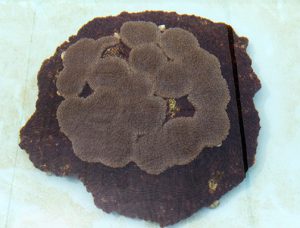Anyone who has read my blog pieces before knows that I write often about corals. While many of the posts have been somewhat saddening recently, I hope that this one might be more uplifting. Last month, I had the opportunity to visit Mote Marine Lab’s International Center for Coral Reef Research on Summerland Key. While I was there for a meeting, I was able to snag a cool tour of the facility and some of the inspiring work happening there.
Corals are living creatures that live as either solitary polyps, or colonial organisms (think single-family house vs. an apartment complex). These amazing creatures build reefs, which among other things, reduce wave energy from hurricanes, provide habitat for wonderful critters including fish, shrimp, crabs, lobsters, turtles, stingrays, etc., are gorgeous to snorkel and SCUBA dive on, and are home to a plethora of other organisms that are being studied for their application in modern medicine.
Coral animals have two ways of reproducing: sexual and asexual. Sexual reproduction is pretty much how we know it—egg bundles mix with sperm and if fertilization is successful, create little coral larvae that will find just the right place to settle on the bottom to grow up into mature organisms. Asexual reproduction means that if the coral should become dislodged, or a piece of the colony breaks away, it can re-establish itself and KEEP growing, similar to the way a lizard’s tail will regenerate. COOL! This technique has become extremely common in the application of coral farming or coral gardening. The corals are either collected from where they became unattached from their original colony, or, living corals are carefully cut apart to keep growing. This process is called fragmenting.
A few years ago, Dr. David Vaughn (formerly of Mote Marine Lab) made an accidental discovery that advanced the field of coral restoration. Dr. Vaughn found that if a coral were split into multiple smaller pieces, they grew even faster. Microfragmenting has been used ever since, being applied to the boulder coral families that typically have slow growth rates in the wild.

At Mote Marine’s outdoor lab facility, there are dozens of tanks of both microfragmented corals, as well as corals that were collected from spawn, being cared for and monitored until they are ready to be outplanted onto the reef. It was really incredible to view all of these tiny corals, growing on their cement plugs. To keep them not only alive but healthy requires a substantial amount of work. The tanks’ water must be circulating properly, salinity and temperature levels must be correct, etc. The icing on the top was peaking in at a tub containing a large cement base, covered in 18 Orbicella faveolata plugs that had been “outplanted” to the base, and found each other to connect and create a coral colony. That base will eventually be placed onto the reef as well. With all of the stress that coral reefs are facing, it was an inspiring tour that gives me hope for the future of Florida’s Coral Reef.
 0
0
